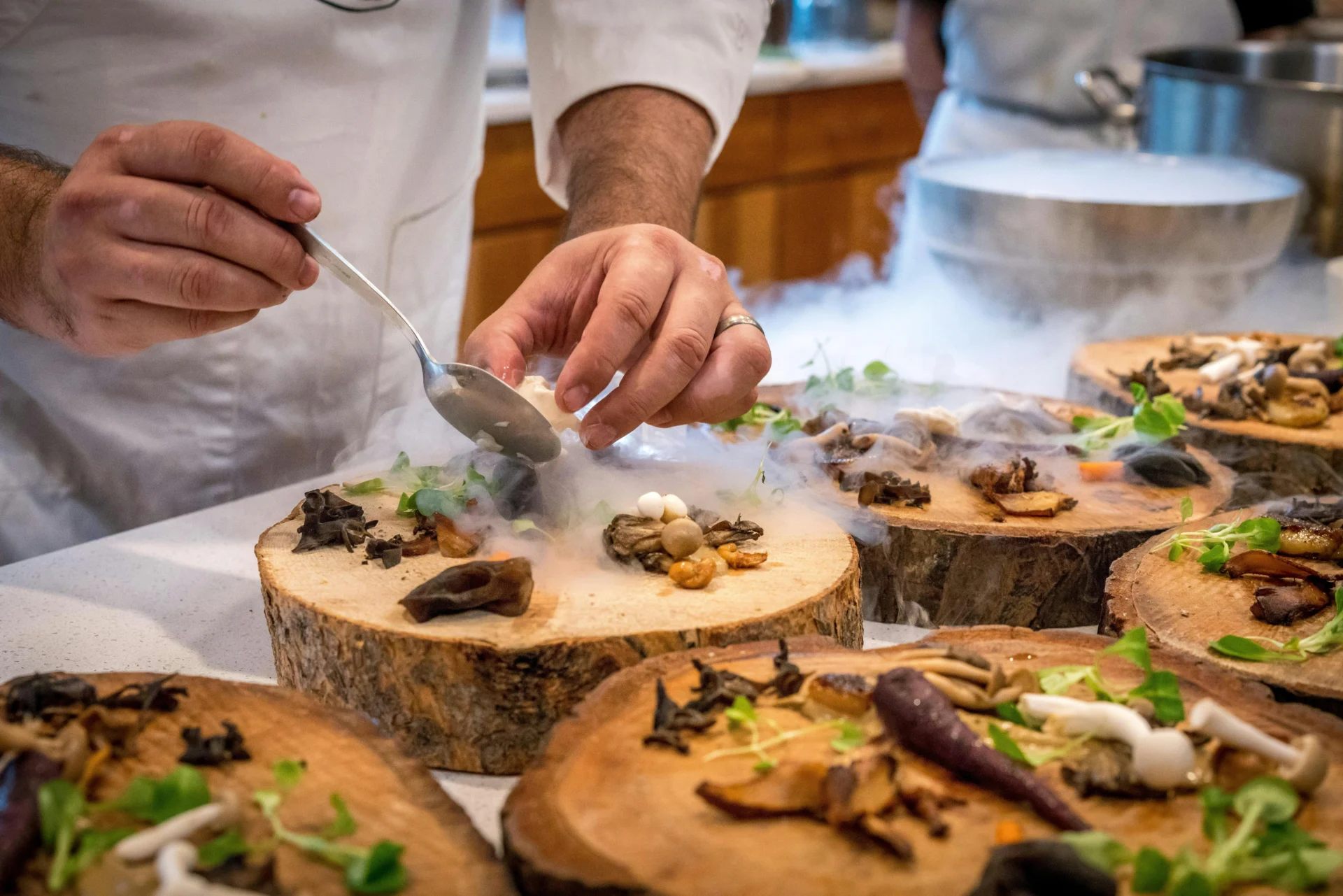The 4Ps of marketing for restaurants provide a timeless framework that shapes how restaurants attract and retain customers. Product, Price, Place, and Promotion remain at the center of every successful marketing strategy in the food marketing industry. Each element works together to create a powerful mix that strengthens a restaurant’s identity. When applied with consistency, this model helps businesses stand out in a competitive marketplace. Furthermore, it ensures that both customer expectations and business goals remain aligned. As trends shift and dining habits evolve, the 4Ps continue to deliver clarity and structure.
Restaurants that integrate this model into their planning often find more opportunities for growth. From designing menus to choosing the right pricing approach, every decision supports a stronger brand presence. At the same time, location strategies and promotions connect directly with the dining experience. Because these components complement one another, restaurants can create lasting impressions that encourage loyalty. Moreover, this holistic approach makes it easier to adapt during times of change. By starting with a clear understanding of the 4Ps, restaurants can build marketing strategies that truly deliver results.
Understanding the Restaurant Marketing Mix
The concept of the restaurant marketing mix has remained relevant for decades because it adapts easily to changing conditions. At its foundation, it revolves around four elements that connect customer desires with business objectives. Within this structure, the 4Ps of marketing for restaurants provide a guide to balancing menu offerings, pricing strategies, distribution methods, and promotions. When all four Ps align, they create a seamless customer journey that feels intentional. However, if one element is overlooked, the entire strategy can weaken. For this reason, restaurants must treat the mix as a system rather than separate parts.
Digital marketing for restaurants has made this framework more powerful by expanding how businesses reach customers. Product covers the quality of food, service, and atmosphere that define a dining experience. Price communicates value while reflecting both operational costs and customer expectations. Place ensures that access remains convenient whether through dine-in, delivery, or online ordering. Promotion highlights why a restaurant deserves attention in a competitive market. Together, these elements define how a restaurant positions itself against rivals. Because customer perception depends on alignment, consistency becomes the key driver of success.
The marketing mix also provides clarity when restaurants face uncertainty. Market changes, rising costs, or shifting customer preferences can disrupt operations. Yet, the framework gives owners a method to reevaluate and adjust their strategies. For example, if demand for delivery increases, the Place element can be adapted accordingly. At the same time, promotions can shift to highlight online deals or loyalty programs. By maintaining flexibility within the framework, restaurants safeguard their ability to remain competitive. In this way, the 4Ps of marketing for restaurants continue to be a vital tool for long-term resilience.
The Power of Product Strategy
Product represents more than food; it encompasses the entire dining experience from menu design to presentation. In the context of SEO for food and beverage, product decisions play a role in how easily diners discover a restaurant online. Applying the 4Ps of marketing for restaurants begins with ensuring that menu items reflect both quality and consistency. Restaurants that highlight signature dishes or seasonal specials create excitement for returning guests. Service quality and ambiance also contribute to how the product is received. Because each detail influences perception, careful design is essential.
Restaurants often use innovation within their product strategies to differentiate themselves from competitors. Creative plating, locally sourced ingredients, and health-conscious menu options attract specific audiences. Seasonal adjustments allow menus to stay relevant and engaging throughout the year. Incorporating unique experiences such as chef’s tables or interactive dining elevates the overall product. These strategies strengthen loyalty while attracting new customers eager to explore something different. As the first pillar of the framework, the product sets the tone for the other Ps. When executed effectively, it builds a foundation for consistent growth.
Examples from successful restaurants demonstrate how product strategy drives results. A global chain may focus on consistency and familiarity to maintain trust. Meanwhile, a boutique restaurant could emphasize exclusivity with limited menu items and premium ingredients. Each approach works when aligned with the overall food brand strategy. In practice, the product defines what a restaurant is known for in its market. Therefore, a strong product strategy not only satisfies immediate demand but also secures long-term positioning. Because it supports branding, profitability, and customer retention, the product is indispensable.
The Role of Pricing in Building Value
Price communicates more than numbers; it tells customers what kind of experience to expect. For restaurants, finding the right balance between affordability and profitability is essential. In the 4Ps of marketing for restaurants, pricing acts as both a driver of brand identity and a measure of customer loyalty. Psychological pricing techniques, such as omitting currency symbols or offering bundles, also shape customer choices. At the same time, pricing must reflect costs to ensure sustainability, and well-planned campaigns like Google Ads for restaurants can reinforce the value behind menu prices by highlighting special offers and unique experiences.
Restaurants can explore various approaches to optimize pricing strategies. Value meals and combo offers appeal to families and groups seeking convenience. Fine dining establishments may set prices that reinforce exclusivity and culinary craftsmanship. Seasonal adjustments allow restaurants to adapt to changing ingredient costs without disrupting consistency. In addition, insights gained from food and beverage market research help operators determine price points that balance profitability with consumer expectations. Each method supports different objectives depending on market position.
Examples of pricing strategies highlight the importance of balance. Quick service chains rely on affordability while maintaining profitability through volume. Upscale establishments justify higher costs with service, ambiance, and premium ingredients. Mid-range restaurants often blend approaches by offering affordable staples alongside premium specials. When restaurants align pricing with their overall product and promotion strategies, they build trust. Pricing, as part of the 4Ps of marketing for restaurants, serves as both a signal of quality and a tool for growth. Moreover, combining strong pricing with targeted advertising ensures customers clearly understand the value being offered.

The Importance of Place in Customer Experience
Place plays a critical role in shaping how customers interact with a restaurant. It includes the physical location, the atmosphere inside, and the ease of access for visitors. Through the 4Ps of marketing for restaurants, a place is viewed as more than geography; it is about convenience and connection. A well-chosen site with strong visibility can naturally attract walk-in traffic. However, digital presence also matters, as online directories and Local SEO for restaurants extend reach. Modern customers expect seamless access whether they are dining in or ordering at home.
Restaurants use places strategically to connect with different audiences. Fine dining establishments often position themselves in prestigious neighborhoods to reinforce exclusivity. Quick service outlets focus on areas with high traffic to maximize volume. Delivery-first businesses invest in cloud kitchens that minimize overhead while expanding online reach. Ambiance and design also enhance how customers perceive place within the restaurant itself. Cleanliness, décor, and layout can either elevate or diminish the experience. Therefore, a place contributes as much to brand identity as product or price.
Examples highlight how place strategies align with customer expectations. Starbucks integrates digital and physical spaces with mobile ordering and cozy in-store seating. Local bistros build community connections by being near cultural hubs. Chains leverage drive-thru systems and delivery apps to emphasize convenience. Because customers weigh both location and experience when choosing where to dine, place cannot be overlooked. A strong place strategy ensures a restaurant remains relevant in multiple contexts. Within the 4Ps of marketing for restaurants, the place completes the customer journey by making access seamless.
Promotion Strategies That Drive Engagement
Promotion ensures that customers know why a restaurant deserves their attention. It includes campaigns, events, and communication strategies designed to highlight unique offerings. Traditional methods such as print ads, billboards, and food and drink advertising remain effective in certain markets. Yet digital promotion now leads the way, offering precise targeting and measurable results. Social media campaigns showcase dishes visually, while email newsletters sustain engagement. Search engine optimization and online ads help restaurants appear where customers are searching.
Restaurants craft promotions that resonate with their audience. Seasonal specials tied to holidays or cultural events encourage timely visits. Loyalty programs reward repeat customers, building long-term retention. Influencer partnerships extend reach by leveraging social media marketing for food brands. Referral programs turn satisfied customers into brand ambassadors. Promotions also include experiential elements succh as chef’s tables, happy hours, or themed nights. Each tactic enhances the restaurant’s connection with its target audience. When done well, it transforms casual diners into loyal advocates.
Real-world cases show how promotion sustains growth. McDonald’s uses global campaigns with iconic slogans to remain top of mind. Independent restaurants often rely on local events or restaurant marketing ideas shared on community platforms. Fine dining establishments may host exclusive tastings to attract elite customers. Each example underscores the adaptability of promotion within the marketing mix. Consistency is critical, as mixed messages can confuse or weaken brand identity. Restaurants that evaluate results regularly refine their approach for maximum impact. Promotion gives life to the entire marketing mix by making the brand visible.
Mistakes That Undermine the Marketing Mix
Restaurants often make the mistake of focusing too much on one element while neglecting others. Heavy investment in promotions without product quality leads to short-lived interest. Similarly, copying competitor pricing without analyzing costs creates unsustainable margins. The 4Ps of marketing for restaurants emphasize balance, and ignoring this principle weakens results. Inconsistent branding across physical and digital spaces also damages credibility. Customers quickly notice when information does not align, leading to mistrust. Successful strategies depend on precision and consistency across all four Ps.
Another common error involves failing to adapt to market changes. Rising ingredient costs or current trends in food and beverage require adjustments to pricing and product offerings. Restaurants that remain static risk losing relevance with customers. Neglecting digital platforms further limits visibility in today’s marketplace. A strong place strategy must include both physical presence and online accessibility. Overlooking feedback also prevents growth, as customer insights reveal areas needing improvement. The 4Ps of marketing for restaurants are designed to evolve alongside consumer behavior. Flexibility ensures continued competitiveness and relevance.
Without tracking promotions or monitoring sales data, owners cannot evaluate effectiveness. Modern tools such as POS systems, CRM platforms, and analytics dashboards provide essential insights. Restaurants that fail to use these tools operate blindly, risking wasted investment. Evaluating return on investment helps determine which strategies deliver results. Consistent measurement also uncovers opportunities to refine the marketing mix. By integrating support from a trusted restaurant marketing agency, owners enhance long-term resilience. Avoiding these mistakes allows the 4Ps to reach their full potential. With balance, adaptability, and measurement, the mix becomes a true engine of growth.
Wrap Up
The 4Ps of marketing for restaurants remain a reliable framework for building strong strategies in the food and beverage industry. Product, Price, Place, and Promotion each play a distinct role but achieve the greatest impact when aligned. Restaurants that apply these principles consistently create experiences that customers value and remember. From menu design to pricing signals and from digital presence to targeted promotions, the 4Ps cover every detail that matters. They ensure that customer expectations align with business goals for sustainable growth.
With over 10 years of experience as a digital marketing agency, fishbat has developed proven strategies that help breweries grow while staying true to their values. Our work blends creativity, analytics, and industry expertise to produce results that matter. Learn more about our process on our about page or reach out to us for a free consultation at 855-347-4228 or hello@fishbat.com. The next step in your brand’s growth starts with a plan, and the right plan can help your brand stand out in both local and national markets.


